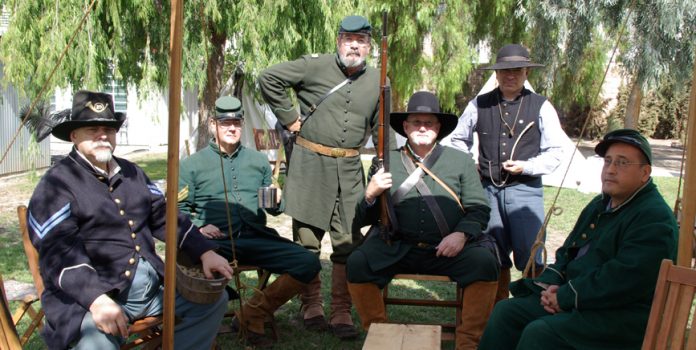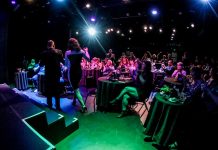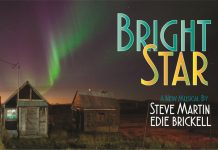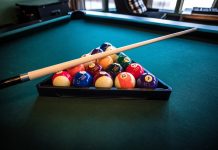Over the weekend, Confederate and Union soldiers set up camp at the Stanley Ranch Museum, in Garden Grove.
It was the third such Civil War reenactment encampment hosted by the Garden Grove Historical Society, offering a great lesson in history.
The war between the states (1861-65) is said to be "America’s bloodiest clash pitting the Union against the Confederate states, resulting in the death of more than 620,000 individuals, with millions more injured."
Over the weekend, Confederate and Union soldiers set up camp at the Stanley Ranch Museum, in Garden Grove.
It was the third such Civil War reenactment encampment hosted by the Garden Grove Historical Society, offering a great lesson in history.
The war between the states (1861-65) is said to be "America’s bloodiest clash pitting the Union against the Confederate states, resulting in the death of more than 620,000 individuals, with millions more injured."
It resulted in the Emancipation Proclamation and, later, the 13th Amendment abolishing slavery. Those soldiers did not die in vain.
In the Civil War, one goal of the north was to protect the United States Capitol; as such, President Abraham Lincoln asked men to go from the West to the East to join other volunteer soldiers from Wisconsin, Indiana and Michigan, ending up in Washington, D.C.
The reenactment individuals take their roles very seriously and say they do research for accuracy.
Lt. 1st North Carolina Cavalryman Paul Lewanski (a 30-year physics teacher at Beckman High School in the Tustin Unified School District), was on hand with his wife, Yolanda, to describe the Confederate's side of the Civil War.
"North Carolina did have some Union soldiers," said Lewanski, "However, it was mostly Confederate soldiers."
Lewanski explained that wives of officers would visit the officers' camps, for the day, during a campaign leading up to the battles, wearing some of their finer clothing.
Yolanda Lewanski was dressed in a mid-1860s outfit that included a cape over a long-sleeved white blouse and a long cotton skirt. It was a very fancy "day-dress," which would have been more dressy than the common women wore at that time and her petticoat with a hoop would have been made with whale bone (creating the hoop) at the bottom of the petticoat, which was expensive, Lewanski explained.
The hoop was a type of air conditioning, for if the women swayed slightly back and forth, it created a circulation of air under the long skirts, according to Lewanski.
The woman's role was to take care of the household, especially taking care of the children and overseeing any servants that the household might have.
Paul Lewanski, who as a child actually lived in the small town of Swansboro, North Carolina, said he remembered things from that area and also did research of what the town was like during the Civil War.
He said reenactment people research the people of that period and sometimes use their real names, "But we are generic to the small towns of the people we represent, representing hundreds if not thousands who would have been in like situations on which we base our background."
"I created my character to match the town, and what my character would have been like."
Here is his Civil War story:
"Before the war, I was a school master and we lived in a small town and didn't have any servants but we did have money that came down from our parents, which we invested well. We were just defending our homes in North Carolina but the Yankees kept coming down here; we just wanted to be left alone. We were in a small port town that the Yankees keep raiding, to close the port.
Part of my story line is that my wife is Hispanic and so her family is from Texas and we met in New Orleans where she was in Finishing School. I visited New Orleans where we met, courted and married, then returned to North Carolina.
"Some reenactment people follow actual historical people but this is our story; most people follow a general person of that period."
Both of the Lewanskis said they love doing the portrayal of the people and have been doing this for 13 years.
Paul Lewanski displayed an authentic horse saddle made of wood that had been covered with wet rawhide, which then dried to the shape of the wood, making the saddle stronger. He explained that when they do have horses for their reenactments, the riders have to train the horses to deal with guns and noise and the horses have to learn to trust the rider.
As the commanding officer of 1st North Caroline Company B, Lewanski said he would have had a sergeant and a group of men in his Calvary.
"The Calvary would use horses mostly for transportation," he said. "Battles would be dismounted because these were 'our personal horses' – one man would hold the horses for the soldiers while they went into battle."
"We would only do quick engagements on horses and get back out," he said.
Lewanski explained that the gun holsters fit on the pommel of the saddle and that the Calvary was issued one revolver and then each soldier brought whatever guns they had at home, as they were farmers. Going out on patrol, there would be a blanket on the back of the saddle; any extra clothing such as socks, would be rolled inside that blanket.
"The front straps on the saddle would hold a second blanket – one blanket for the soldier and one blanket for the horse unless the weather was very cold – then both blankets were used for the horse.
"A sick man can ride a well horse but a well man cannot ride a sick horse," Lewanski said. "The Confederate soldiers took care of their horses because they belonged to the soldiers, whereas the Union soldiers were provided remounts."
A displayed sign reads: Men wanted for Cavalry. The undersigned having been appointed to raise a Company of Cavalry for the war, calls upon the young men to come forward and volunteer for that purpose – $100 Bounty will be paid to each man as soon as mustered into service; plenty to eat and good clothes will be furnished by the government.
Men who come and bring their horses will be paid $24 per month. Those who have good shotguns can get a good price for them. Volunteers will, for the present, address me at Greensboro, N.C., John A. Wren.
There were Union soldiers on hand over the weekend too, who explained that the Confederates brought whatever guns they had to the Civil War. Some brought Flintlock's and some converted the Flintlock to a percussion, which made it so once the gun was cocked it could be fired more rapidly, thus firing more rounds.
They also explained that the "Berdan Sharp Shooters" in the Civil War would be considered "snipers" today.
The Berdan Sharp Shooters were started by Hyrum Berdan and Casper Trepp, who formed a group called the Scout Sharp Shooters.
To be a member of the Berdan Sharp Shooters Unit, men had to be expert marksman – not an easy position – since they were out-numbered 10-to-one throughout the Civil War.
In the 1st Regiment Company “C” from Lansing, MI, out of 101 men only five of the original unit were left when the war ended in 1864.
“The Berdan Sharp Shooters located the enemy and held them for the Army; the Sharp Shooters were the eyes and ears of the Army.
The Civil War was pivotal in the history of the U.S. and California played an important role in the War.
The major battles took place in the East; however, troops from the Drum Barracks kept California in the Union, protecting local citizens and the Wilmington Harbor along with much of the southwest and secured the territories for the Union, now known as Arizona and New Mexico.
Approximately 17,000 Californians served in volunteer regiments in the West and in regiments fighting in the East during the four-year battle.












